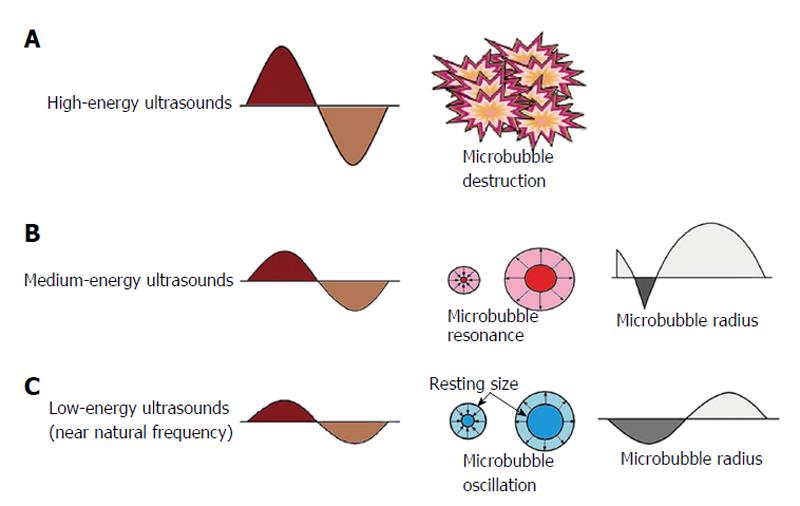Copyright
©The Author(s) 2015.
World J Cardiol. Dec 26, 2015; 7(12): 861-874
Published online Dec 26, 2015. doi: 10.4330/wjc.v7.i12.861
Published online Dec 26, 2015. doi: 10.4330/wjc.v7.i12.861
Figure 1 Behavior of microbubbles in an ultrasonic field.
An acoustic wave generated by an ultrasound system consists of alternating high and low pressures: The positive pressure compresses the microbubble, and the negative pressure expands it. High-energy ultrasound (within the energy levels used for diagnostic echocardiographic imaging) destroys microbubbles (A); Intermediate energy ultrasound triggers asymmetrical nonlinear oscillations of microbubbles so that the magnitude of compression and rarefaction waves are not the same with each oscillation, and frequencies other than (e.g., multiple of) the intrinsic fundamental frequency are generated (B); Low-energy ultrasound causes microbubbles to oscillate linearly, which reflects ultrasound at their intrinsic fundamental frequency (C).
- Citation: Barletta G, Del Bene MR. Myocardial perfusion echocardiography and coronary microvascular dysfunction. World J Cardiol 2015; 7(12): 861-874
- URL: https://www.wjgnet.com/1949-8462/full/v7/i12/861.htm
- DOI: https://dx.doi.org/10.4330/wjc.v7.i12.861









